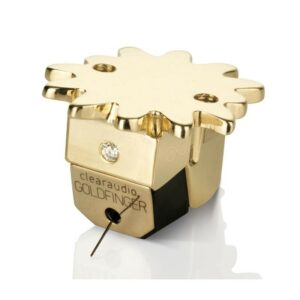
When TAS, or anyone for that matter, reviews audio equipment, there is a problem. Harry Pearson, TAS founder and first editor-in-chief, was frustrated with this as early as issue number 4 (in 1974). He wrote “There is an incalculable amount of nonsense, myth and misinformation afoot in the world today.” He went on to say “In other words, according to the myth lovingly entertained by some of our commercial brethren, The Absolute Sound does not believe in measurements. That, of course, is most singular High Nonsense.”
Almost 50 years later, this is not really the political battle it once was, but I don’t think the politics of this were ever that interesting to most of our readers. However, readers and reviewers alike cannot really escape the issue of epistemology that confronts all of us as humans and as audiophiles. In plain english, we all face the issue of how we gather and transmit knowledge of the sound of audio equipment.
As reviewers, we have to acknowledge that, even assuming we have gained very good knowledge (from objective observations) in our own minds about how a piece of gear sounds (not as easy as it seems, btw), we face the issue of communicating that knowledge to our readers. And you, dear reader, face the issue of understanding what we are saying. Again, not so easy.
Measurements are one way of communicating knowledge. Words are another. Both have their virtues and limitations. So, philosophically, TAS, as far as this argument goes, doesn’t really have a preference for one over the other, and ideally perhaps we would offer both kinds of information. We choose to focus on words because our experience is that they are one level closer to how readers think about sound than measurements are. That is, measurements, for most listeners, must be translated into words (descriptions of sound quality) to be understood. That two-step process can be “lossy” as we shall discuss below. But, again, having both measurements and words would seem to be perfectly legitimate.
There are two practical issues with measurements. One is that measurements are difficult to do well, a difficultly amplified by needing a large team of reviewers to cover 100+ products per year.
The other is that measurements are notoriously hard to interpret. We have the issue of the objective function (what should the measurement look like?). We have the issue of adding up the measurements (e.g. how does one sum on-axis frequency response, power response, distortion, narrow band resonances, frequency range, dynamic compression, efficiency, impedance, etc?). And so on.
I wish to call your attention to a related issue of interpretation. This is a kind of cognitive bias that favors quantification over other forms of information. Numbers seem so clear and pristine that I think this bias is understandable. But it can easily lead us astray. I want to show an example to help explain this.

Above you will see a comparison of the on-axis frequency response of two of my favorite loudspeakers: the Magnepan LRS and the Wilson Audio Alexx V. Take a look at the yellow curve (which merges with the blue at 500 hz). That yellow/blue curve is the raw measurement of the LRS. The speaker appears to have a 15 db area of emphasis between about 70 hz and 100 hz and generally bloated bass from 60 hz to 250 hz. Here is the problem: dipole speakers like the LRS have a low frequency cancellation effect in which the front wave melds with the rear wave of the speaker and reduces total output in the bass and lower midrange. So, with that bit of physics in hand, we know that the raw measurement of a speaker like the LRS has to be “corrected” to understand the actual output that will reach the listener’s ears. I have done this correction, using an estimate of the effective baffle width of the LRS and the acoustics of the cancellation effect (the full blue line). What I notice, and you may notice is:
• From 80 hz to 10 khz, the frequency response of the Alexx V and LRS are quite similar
• Below 80 hz, the LRS falls off quite rapidly, suggesting a speaker that could use a subwoofer
• The general slope of the Alexx V and LRS response curves suggest that the LRS might sound a bit brighter or the Alexx V might sound a bit darker, but one would want some power response date to really understand this (or you could just listen)
I don’t want to over-interpret one graph. My main points are that the description offered in these bullets is basically what my listening notes said, and that the LRS sounds nothing like the yellow line suggests. And yet, if all we have is the yellow line, what are we to think? As I said, measurements are hard. And they stand on the cognitive bias that quantitative = objective. With that in mind, it simply isn’t obvious that measurements are a better form of communication. Measurements are valuable to engineers, but oddly, they can play to a subjective element of our cognition that sometimes isn’t helpful. Words, of course, have problems too, which we will address at another time.























